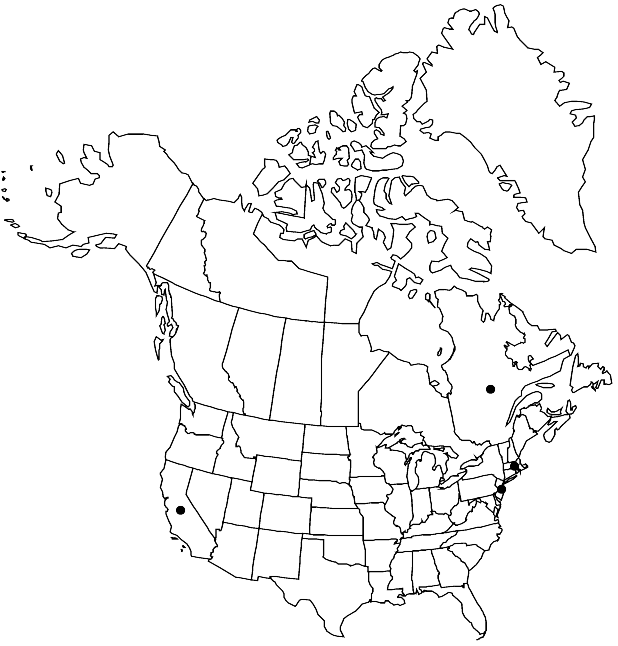Difference between revisions of "Diplotaxis erucoides"
Syst. Nat. 2: 631. 1821.
FNA>Volume Importer |
FNA>Volume Importer |
||
| Line 25: | Line 25: | ||
|habitat=Ballast and waste places | |habitat=Ballast and waste places | ||
|distribution=Que.;Calif.;Mass.;N.J.;Eurasia;Africa;introduced also in South America (Argentina). | |distribution=Que.;Calif.;Mass.;N.J.;Eurasia;Africa;introduced also in South America (Argentina). | ||
| − | |discussion=<p>Diplotaxis erucoides was introduced from Europe as a ballast plant in the last century and may have failed to persist in some of the recorded provinces and states.</p> | + | |discussion=<p><i>Diplotaxis erucoides</i> was introduced from Europe as a ballast plant in the last century and may have failed to persist in some of the recorded provinces and states.</p> |
|tables= | |tables= | ||
|references= | |references= | ||
| Line 49: | Line 49: | ||
|publication year=1821 | |publication year=1821 | ||
|special status= | |special status= | ||
| − | |source xml=https://jpend@bitbucket.org/aafc-mbb/fna-data-curation.git/src/ | + | |source xml=https://jpend@bitbucket.org/aafc-mbb/fna-data-curation.git/src/8f726806613d60c220dc4493de13607dd3150896/coarse_grained_fna_xml/V7/V7_651.xml |
|tribe=Brassicaceae tribe Brassiceae | |tribe=Brassicaceae tribe Brassiceae | ||
|genus=Diplotaxis | |genus=Diplotaxis | ||
Revision as of 18:59, 18 September 2019
Annuals or biennials, not scented. Stems erect, 1–4(–8) dm, densely pubescent throughout, (trichomes retrorse, appressed). Basal leaves: blades elliptic to obovate, 2.5–8 cm × 10–40 mm, margins sinuate to pinnatifid or lyrate, (2–5 lobes each side), (surfaces pubescent throughout, trichomes antrorse). Cauline leaves (distal) sessile; blade (base cuneate to broad, truncate), margins similar to basal, (distally reduced, subtending proximal flowers). Fruiting pedicels 3–10(–22) mm. Flowers: sepals 4–5.5 mm, pubescent, trichomes ± flexuous; petals white (turning purple when dried), 7–10 × 4–5 mm; filaments 4–6.5 mm; anthers 1.5–2 mm; gynophore obsolete or to 0.5 mm. Fruits erect-patent, 2–3.5(–4) cm × 1.5–2(–2.5) mm; terminal segment beaklike, 2–5 mm, 1- or 2-seeded. Seeds 1–1.2 × 0.5–0.8 mm. 2n = 14.
Phenology: Flowering summer.
Habitat: Ballast and waste places
Distribution

Que., Calif., Mass., N.J., Eurasia, Africa, introduced also in South America (Argentina).
Discussion
Diplotaxis erucoides was introduced from Europe as a ballast plant in the last century and may have failed to persist in some of the recorded provinces and states.
Selected References
None.